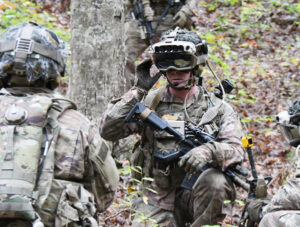The Army’s evaluation of the new Integrated Visual Augmentation System (IVAS) during its upcoming operational testing period will determine whether the service moves forward with the program, Secretary Christine Wormuth said Tuesday.
Wormuth told the Senate Appropriations Defense Subcommittee the service still “feels good about where we are with IVAS” as the program heads into a critical initial operational test and evaluation this month through June.

“We will want to take the results of that test into consideration as we decide how much of IVAS to buy, for example,” Wormuth told the panel. “We are not going to move forward with IVAS if we don’t have confidence coming out of that test, so it will be an important milestone.”
Wormuth expressed confidence in the program and its future trajectory as the new Microsoft [MSFT]-built headset moves into the upcoming IOT&E period, which was delayed from its original late FY ‘21 start date.
“I think our sense is that the testing is going to prove that the system and some of the kinks that we’ve been working on with Microsoft are going to be resolved. But if we were surprised by the test results, we would certainly want to take that into account. But right now the trajectory that I think I see in front of us is that we are going to move forward with fielding IVAS,” Wormuth said.
Wormuth told the Senate Armed Services Committee last week senior Army officials “did not fully agree” with the findings in a recent Pentagon inspector general’s report that stated the Army “did not define minimum user acceptance levels” for the IVAS program and risk potentially ‘wasting’ $22 billion if soldiers don’t want to use the new headset. (Defense Daily, May 5).
Lawmakers have already placed $350 million of the total $405.1 million for IVAS procurement in FY ‘22 on hold until the completion of IVAS’ initial operational test and evaluation and after Army officials brief Congress on the status of the program (Defense Daily, March 14).